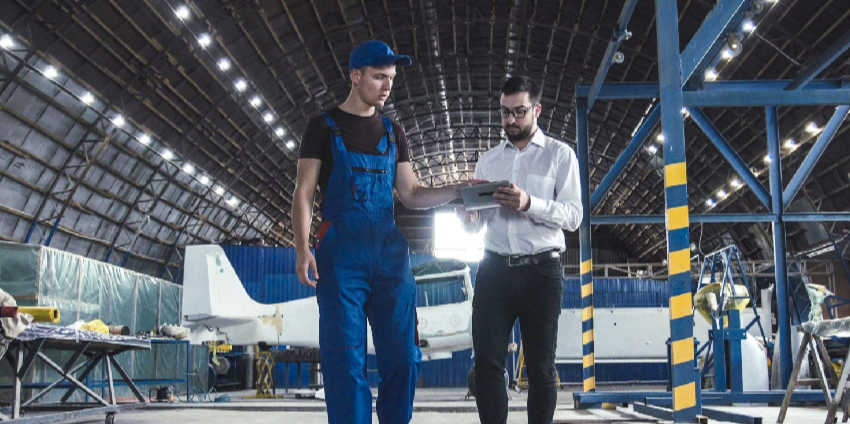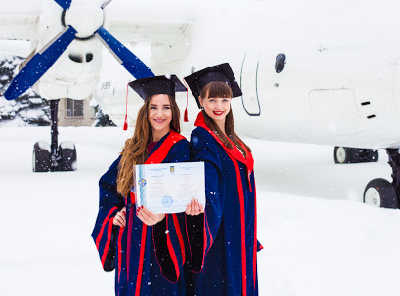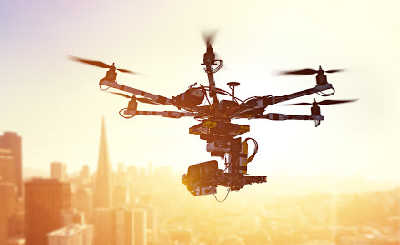For local resources,
choose a city page in Minnesota:

Aviation Degree Programs in Minnesota
Aviation degree programs in Minnesota are gaining popularity in the industry. Today, you can earn a Bachelor's or Associate's degree in-flight technology, aviation management, aviation technology, air traffic control, or avionics from a variety of colleges and universities near Minnesota. If you're planning on going to college and want to end up with a career in aviation, these college and university programs in Minnesota are a great way to meet your overall goals.
Pilot Training Colleges and Universities in Minnesota
Learning to fly and earning a pilot degree go hand-in-hand at pilot training colleges and pilot universities. Here are just a few of the advantages of earning a degree while you're becoming a pilot: Most, if not all, colleges, universities and flight academies in Minnesota that offer aviation degrees are accredited institutions that translate into a school you can trust. We hope you find our listed degree programs beneficial in achieving your aviation goals in Minnesota!
Accreditation means these schools must meet or exceed rigorous regulations and scrutiny by both their accrediting agency and the governing body where the school is located.  In addition, accredited schools' curricula must be approved and up-to-date in order to maintain accredited status. Most of these schools may be eligible to offer financial aid grants and loans to those students who qualify.
In addition, accredited schools' curricula must be approved and up-to-date in order to maintain accredited status. Most of these schools may be eligible to offer financial aid grants and loans to those students who qualify.
Finally, a college degree is all but a requirement in today's job market for a professional pilot seeking employment in Minnesota. In order to be marketable, most newbie pilots will need at least an Associate's degree or preferably a Bachelor's degree.
Aviation Maintenance Degree Programs around Minnesota
Aviation maintenance training and earning a college degree go hand-in-hand at these schools. Here are just a few of the advantages of earning a degree while you're learning the skills you need to become an A&P aircraft mechanic:
Most, if not all, colleges, universities and academies that offer aviation maintenance degrees are accredited institutions which means you can trust these schools. Accreditation means these schools must meet or exceed rigorous regulations and scrutiny by both their accrediting agency and the governing body where the school is located.
In addition, accredited schools' curricula must be approved and up-to-date in order to maintain accredited status. Most of these schools also are eligible to offer financial aid grants and loans to those who qualify. Finally, a college degree will help differentiate you in today's job market.
Helicopter Training Degrees in Minnesota
Helicopter pilot training and earning a college degree go hand-in-hand at these schools. Here are just a few of the advantages of earning a degree while you're becoming a pilot: Most, if not all, colleges, universities and flight academies that offer helicopter degrees are accredited institutions which means they are schools you can trust.
Accreditation means these institutions must meet or exceed rigorous regulations and scrutiny by both their accrediting agency and the governing body where the school is located. In addition, accredited schools' curricula must be approved and up-to-date in order to maintain accredited status.
Most of these schools also are eligible to offer financial aid grants and loans to those who qualify. Finally, a college degree is all but a requirement in today's job market for a professional helicopter pilot seeking employment in Minnesota. In order to be marketable, most newbie pilots will need at least an Associate's degree or preferably a Bachelor's degree.
Drone Schools and Universities Offering UAV Degrees in Minnesota
Time Magazine's Lev Grossman says 76 countries are either developing drones or shopping for them and fully one-third of the US Air Force aircraft fleet is now unmanned. One thing's for sure... the drone market is just starting to heat up. Universities are getting into the game, offering degree programs in unmanned aircraft systems for pilots, sensor operators, and drone mechanics.
Our list of drone schools below is a great place to start if you're considering getting into the drone industry.  Most of these drone university programs near Minnesota prepare you for a career in the UAV industry either as a pilot or sensor operator.
Most of these drone university programs near Minnesota prepare you for a career in the UAV industry either as a pilot or sensor operator.
You've probably got lots of questions about how the training works, how much it costs, what financing is available, and more, so why not contact the experts to get answers? Use the form on each school's page to request more info. Good luck!
Aviation Management Training in Minnesota
With global demand for air transportation expected to rise over the next 20 years, the need for qualified aviation and airport managers may be great. Aviation management training programs in Minnesota are gaining popularity at colleges and universities globally. Some schools also offer airport management training.
If you're considering a career in aviation management, you likely have a lot of questions about how much the training costs, how long it takes to complete, what the job market looks like after graduation, and more. Why not contact the experts to get your questions answered?
The schools in Minnesota can help you make a decision about what type of training program is best for you. Contact as many of the schools below as you need.
AT-CTI Air Traffic Control Degree in Minnesota
Air traffic controller training and earning a college degree go hand-in-hand at these FAA-approved schools. The FAA has a partnership program with select colleges and universities called the Air Traffic Collegiate Training Initiative (AT-CTI).
Some approved schools in Minnesota offer both Associate and Bachelor degrees in aviation which prepare graduates for entry-level job interviews for FAA air traffic control specialist positions. If you're thinking about becoming an air traffic controller, it's important to realize this is a competitive, high-paying, and high-stress career, and you'll need an impressive resume to get hired.
Most often, that resume will need to include a college degree. Why not "stack the deck" in your favor by earning a college degree that could apply directly to your career? There's also another advantage to earning a degree from AT-CTI approved colleges... doing so allows you to bypass the first five weeks of training at the FAA's Oklahoma City ATC training program (the FAA calls this five-week course the Air Traffic Basics Course).
You've probably got more questions so why not ask the experts? Contact the schools below for the information you need to make a decision about attending an FAA AT-CTI program.
FAA - A History of Fixed Wing Structures Info for Minnesota
A steady increase in the use of honeycomb and foam core sandwich components and a wide variety of composite materials characterizes the state of aviation structures from the 1970s to the present. Advanced techniques and material combinations have resulted in a gradual shift from aluminum to carbon fiber and other strong, lightweight materials. These new materials are engineered to meet specific performance requirements for various components on the aircraft.
Newton’s Laws of Motion
The fundamental laws governing the action of air about a wing are known as Newton’s laws of motion. Newton’s first law is normally referred to as the law of inertia. It simply means that a body at rest does not move unless force is applied to it. If a body is moving at uniform speed in a straight line, force must be applied to increase or decrease the speed.
